I constructed a 2V geodesic dome to serve as my chicken house. The dome has a diameter of about 1 meter and is about 50cm high. The triangular entrance is about 30cm on each side. Below are some of the details explaining the construction of my dome.
Why?
So you may wonder why I built a geodesic dome. Well, obviously, geodesic domes are awesome and inspiring structures. There's quite a few advantages to the structure that make it very suitable for some of my personal requirements for a chicken house.
Maximizes volume per surface ratio: Well, the optimal would be a perfect sphere, but this is very, very close. The inside of the dome is very spacious (the floor is about 1.5 square meters, good for about 3 to 4 chickens) and the amount of paneling needed is very limited (just over 3 square meters) and thus cheap to make. As an extra, if it's really cold, the chicken's warmth will be better preserved than a box-shaped chicken house. Not that chickens care about saving on heating.
Superior weight to strength ratio: A geodesic dome, by design, perfectly balances forces of compression (forces causing material to be squeezed) and tension (stress that pulls material apart). I can easily stand on the dome without it moving a millimeter but still easily lift the whole dome single handedly.
Does not require a primary support structure The construction of a geodesic dome does not require a frame to support the dome, which saves on space and materials required to build the dome.
The chicken house as a few extra features. The house is raised about 40cm from the ground so the house is safe from any moisture creeping up from the ground. Chickens like to be out of the rain when it's pouring and this height provides them with a dry place to sit. As another feature, the whole dome sits loosely on top of the table-like floor. I can easily lift the dome on either side to collect eggs, or simply remove the whole dome from the floor in order to clean the inside of the chicken house. Having had many chickens and various chicken houses, I believe that the dome is superior to most other chicken houses for these tasks.
It is the pervading law of all things organic and inorganic,
Of all things physical and metaphysical,
Of all things human and all things super-human,
Of all true manifestations of the head,
Of the heart, of the soul,
That the life is recognizable in its expression,
That form ever follows function. This is the law.
-- Louis Sullivan
Of all things physical and metaphysical,
Of all things human and all things super-human,
Of all true manifestations of the head,
Of the heart, of the soul,
That the life is recognizable in its expression,
That form ever follows function. This is the law.
-- Louis Sullivan
Dome construction
I started of with some wooden boards, some metal plumber's strap and screws.
First job is to cut out a whole bunch of triangles from the wooden boards. For the geodesic dome I wanted to make, I needed 30 isosceles triangles of one size and 9 equilateral triangles.
Kept on cutting triangles until my garage was full of triangles ...
I cut out short pieces of the strapping to produce parts that can join the triangles together (I needed more than 100 of these ...).
First, I used up all isosceles triangles to make 6 pentagons.
Then, I started using the equilateral triangles to join these pentagons together. Below is the pentagon that will become the top of the dome, with 5 equilateral triangles attached.
With this top, I started adding more pentagons to the construction ...
until all pentagons were combined into a dome with some "entrances" which needed to be filled, except for one.
Here's a peek into my garage while working on the dome.
The entrance was locked into place with a "step," an extra piece of wood to make the construction as sturdy as possible.
Making the dome water tight.
Now that the construction of the dome was finished, I needed to protect it for the harsh outdoors it's going to spend in. Here's some of the products I used.
- (Insect repelling) saturator (makes sure all pores are stuffed and no water can enter the wood, at the same time make sure no insects can eat up my wood)
- Silicones to make the joints water tight
- Roof rubber to cover the whole dome and make it water repellant (this rubber is used to fix leaks in roofs and at the same time reflects most of the sunlight so it doesn't get all too warm in the dome)
First, I soaked the wood with saturator.
Then, I filled all joints with silicones
I prepared the dome for painting with rubber.
Dome floor
Using "betonplex" (an outdoor triplex used to make formwork to pour concrete, very sturdy, and easy to clean when it's full of chicken shit). I traced the form of the dome, cut it out and used plumber's strapping to make an edge around the flooring so the dome can fit on top of the floor.
Handles
The dome is supposed to sit loosely on top of the floor and by lifting it up I can collect eggs or clean the inside of the house. In order to lift the dome, I needed some handles. Here's the jig I used to drill holes for the handles.
Installation
I used a few wooden outdoor poles to raise the whole dome about 40cm from the ground and made a simple wooden step so the chickens can get into their house. Here's all the parts, ready for installation.
End result
And as such, I created my own nonconventional geodesic dome chicken house!
My chickens quickly figured out how to get into the house (they'd never seen a house with a ladder) and already on the first day, I could collect yummie eggs from the new chicken house. It seems like it works!
Open problems
- One problem of the current design may be ventilation. If the dome gets too hot in the summer, I'll install a small ventilation vent in one of the top triangles of the dome.
- Also, I'm not sure if the current floor design will keep rain out of the house, or whether it'll seep in. One idea is to drill holes in the floor to dry the inside.
- Some commenters mentioned that it's not fox safe, but since there's no foxes in our neighborhood I don't need to protect my chickens from them. A triangular door could easily be made to close the dome for the night or the ladder could be made fox-safe.
- Some commenters said this shouldn't be considered a hack, because then gazebos are hacks too. OK, I did not hack a coyote proximity sensor into an existing chicken house, so I didn't hack a chicken house. Then again, it's geodesic and geodesics rule.
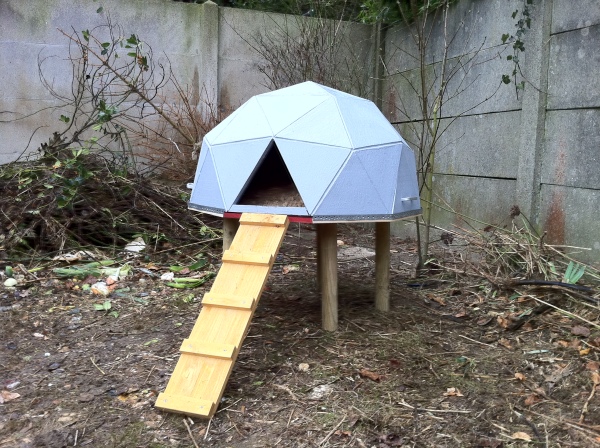
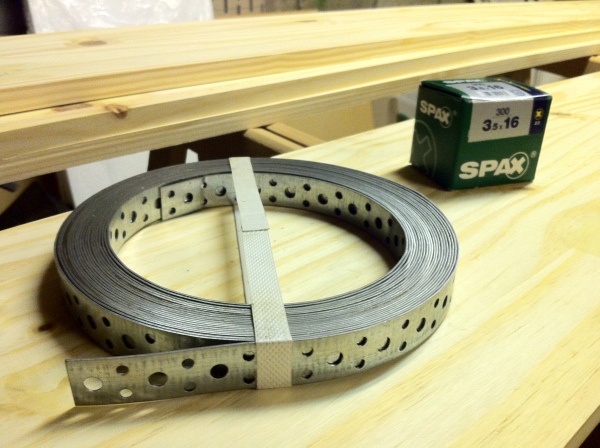
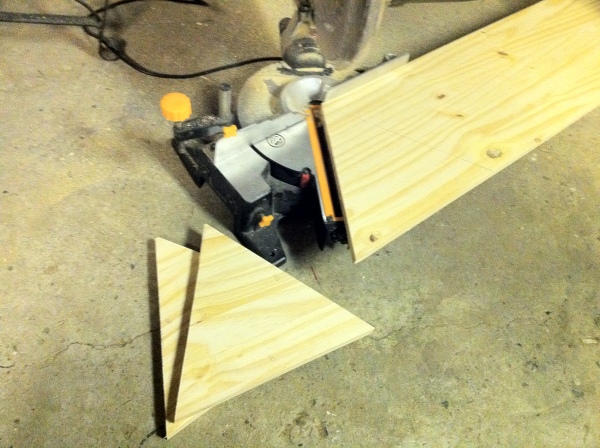
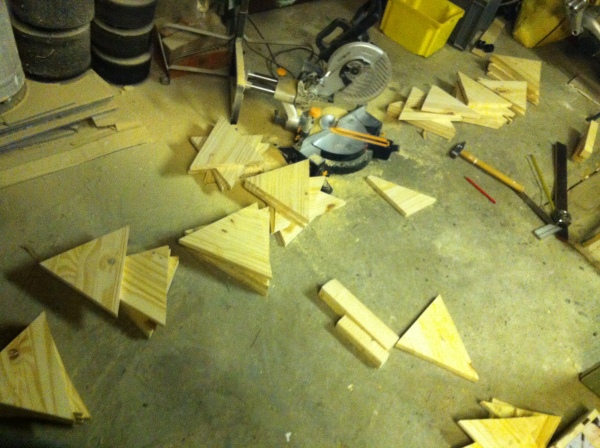
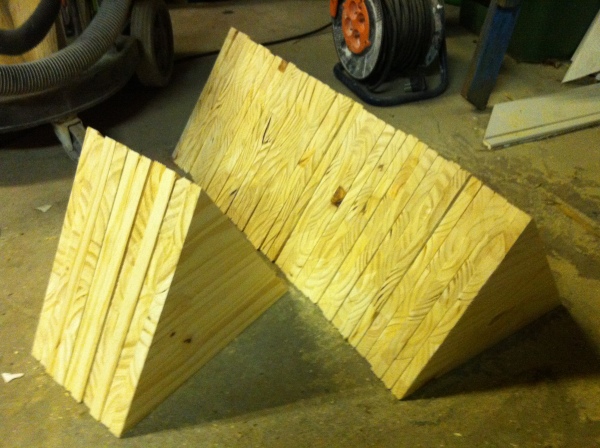



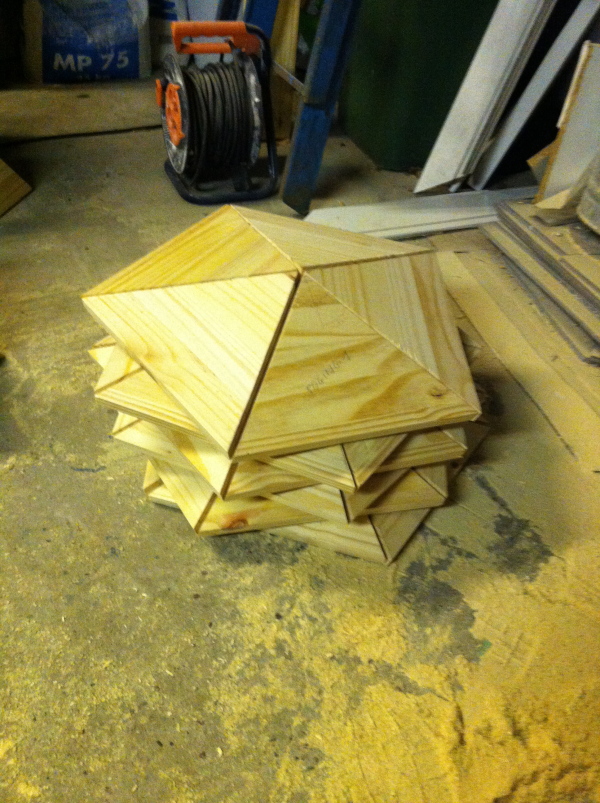

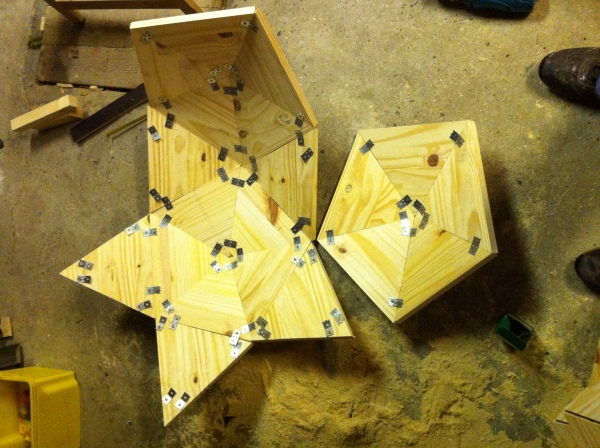
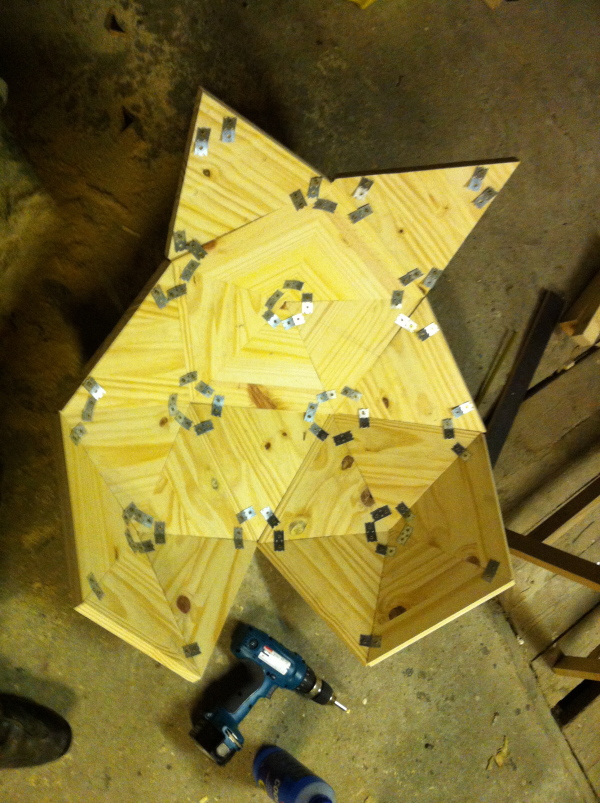

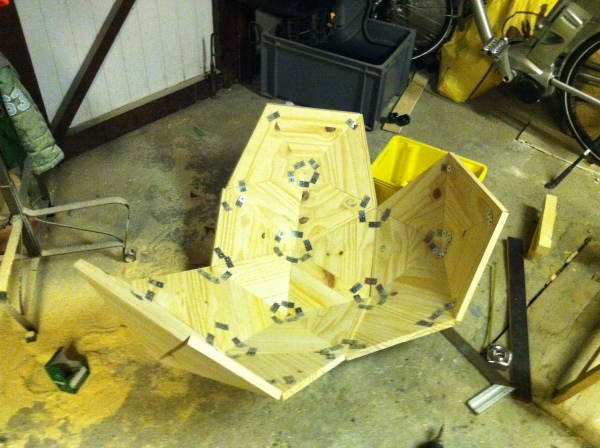
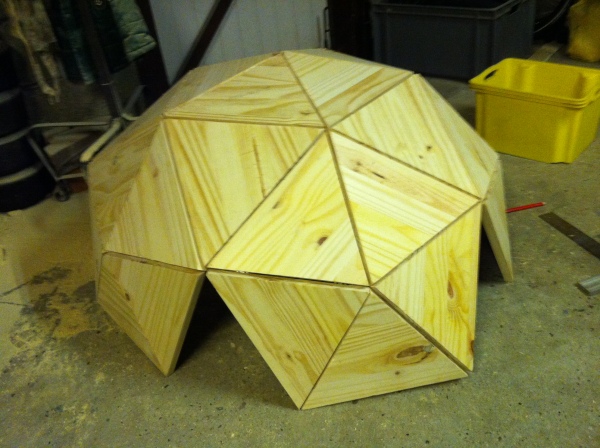

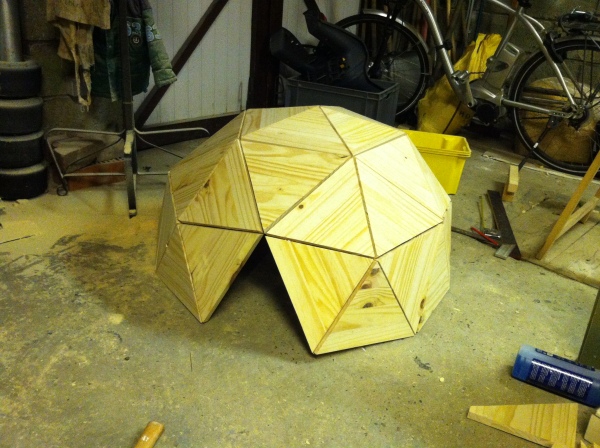
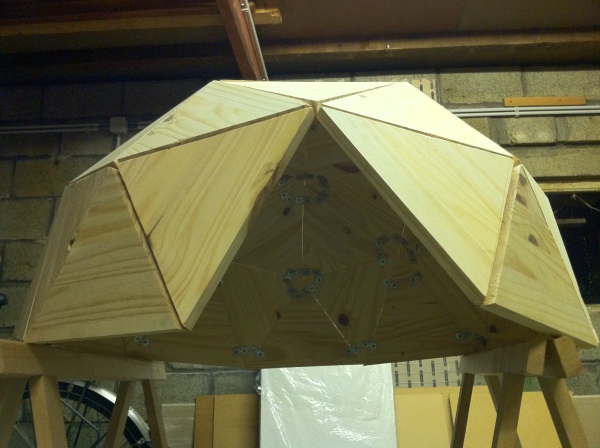

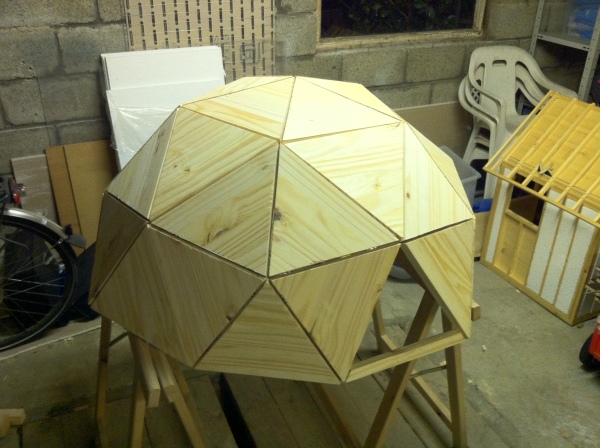
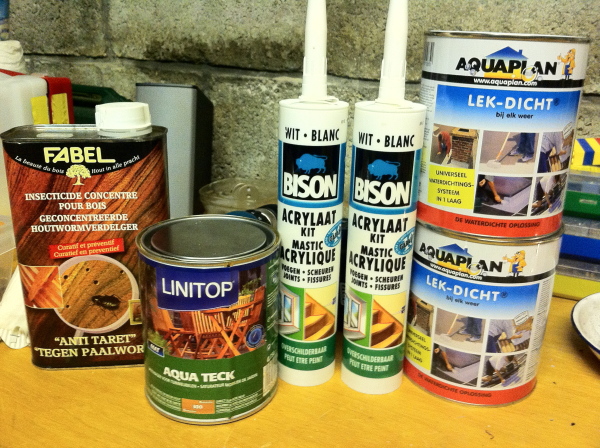


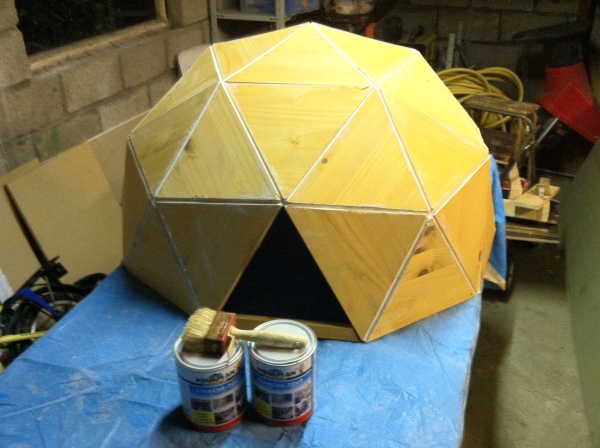
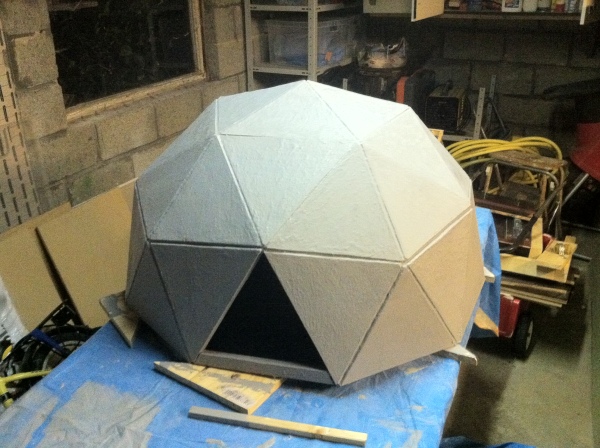

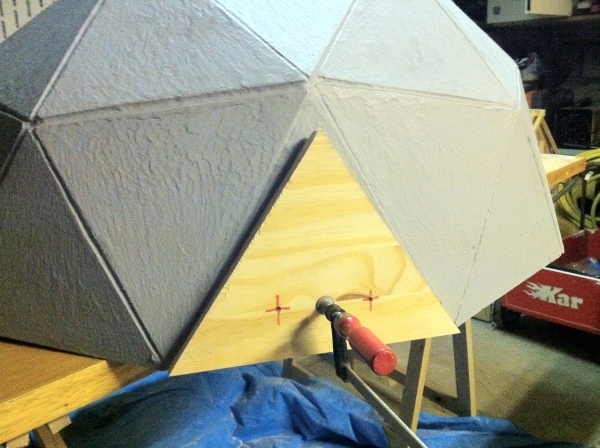
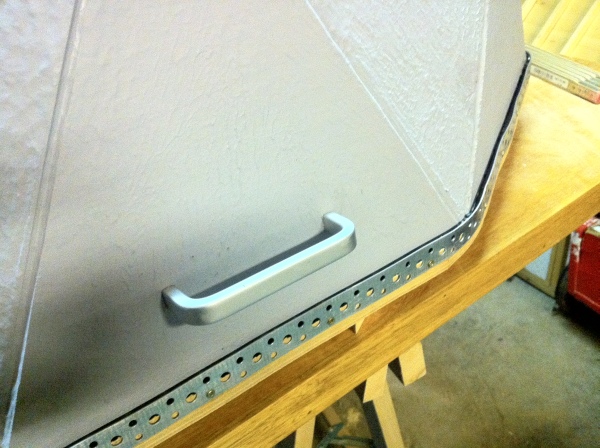
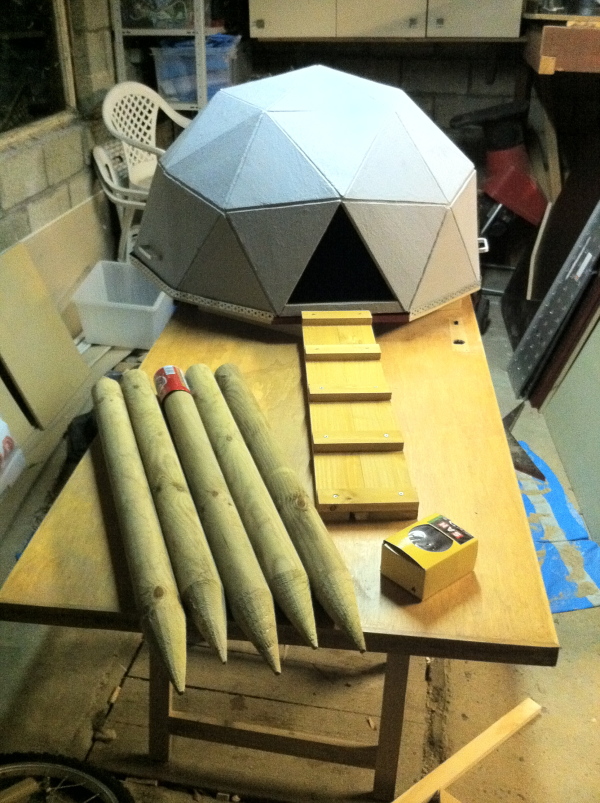

exelente https://www.academia.edu/19748963/domo_v4
ReplyDelete